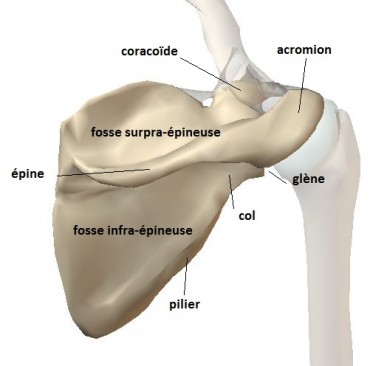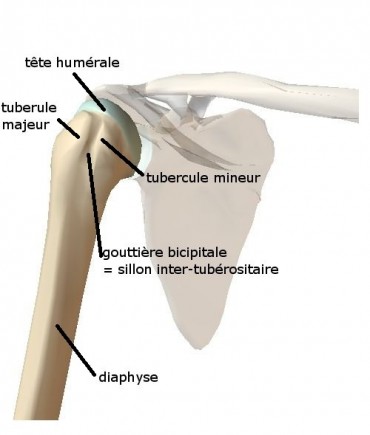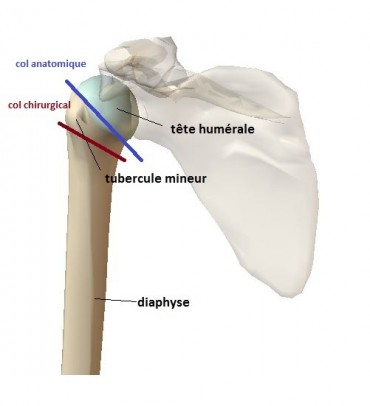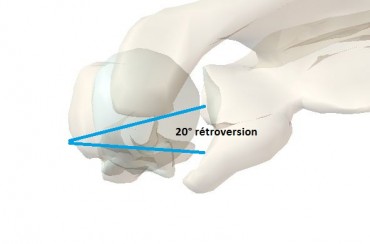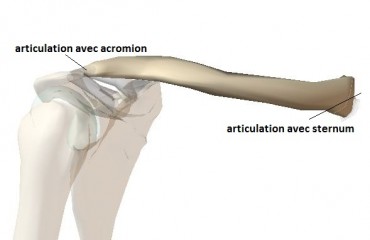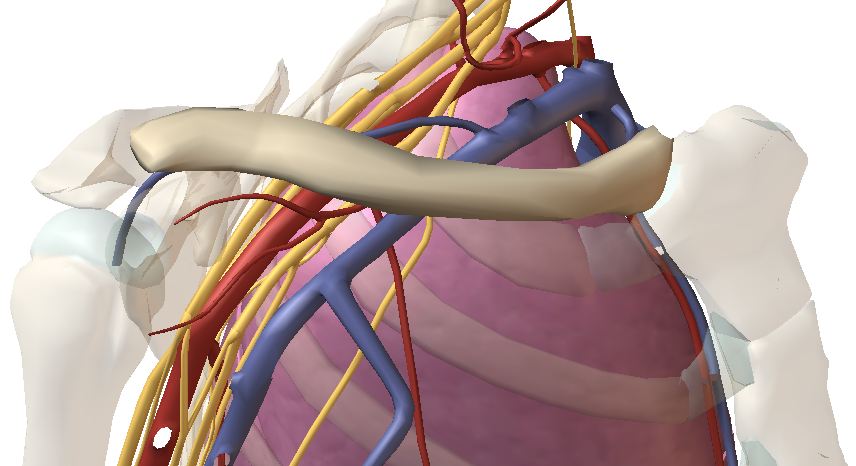Long and hollow bones (like tubes) are distinguished from flat bones, the inside of a bone (medulla) contains the bone marrow that makes the blood cells.
It is a living structure richly vascualized and sensitive (so can bleed and hurt!).
The diaphysis
corresponds as for any long bone to the intermediate fine part between the two ends, circular or triangular to the cut and hollow.
the humeral head
portion of sphere covered with cartilage, it looks back generally from 20 to 30 ° (= retroversion).
It is separated from the rest of the bone by the anatomical neck of the humerus (different from the surgical collar most frequent place of fractures)
Tuberosities
Bony reliefs on which the tendons of the rotator cuff are inserted.
major tubercle: superior and external to the humeral head where the tendons of the supraspinous and infraspinous muscles are inserted
minor tubercle: anterior to the humeral head where the supraspinatus muscle tendon is inserted
the bicipital groove
located between the tuberosities (furrow between the tuberosities), it corresponds to the passage of the tendon of the long portion of the biceps.
The clavicle is a long and thin bone, a true ‘bumper’ of the thorax.
It participates in the functioning of the shoulder at its external third and lateral extremity, articulating with the acromion (acromioclavicular joint)
Through it the upper limb is maintained at an ideal height, thanks to the presence of ligaments between the clavicle and the coracoid (cf coracoclavicular ligaments).
It is also connected forward to the sternum and the ribcage by the sternoclavicular joint, thus protecting the nerves and vessels intended for the arm, then the apex (summit) of the lung and finally the large vessels of the base of the lung. neck close to the sternum.
the glenoid
It represents the part that responds to the humeral head, pear-shaped, also covered with cartilage. It is relatively flat and therefore does not provide stability to the joint, but it contributes to the greater joint mobility of the human body.
the spine
Located on the posterior surface, it is prolonged by the acromion which responds to the clavicle (articular surface covered with cartilage), it separates the supraspinous (above) and infra-thorny (below) muscular pits.
the coracoid process
Anterior bone appendage, a true tendinoligamentary node from which the ligaments suspend with the clavicle (coraco-clavicular) and the common tendon of the short portion of the biceps and the coraco-humeral muscle. This bone process is used for coracoid shoulder pads.
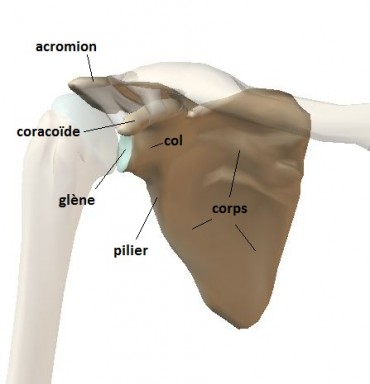
Scapula (omoplate) de face
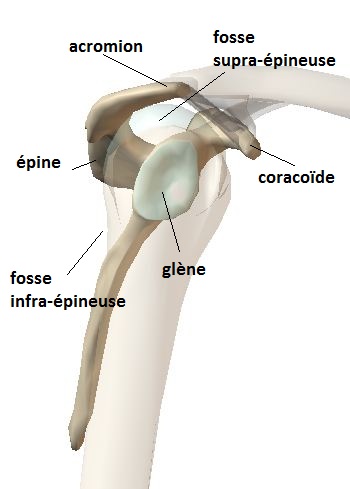
scapula de profil
